|
|
I’ve been relatively obsessed as of late with cross-platform integrations in Trello and, more recently, Rocketchat (a free and open source Slack alternative) for coordinating the many tasks involved in the day-to-day affairs of my two main project-babies: Omni Commons and Sudo Mesh. There comes a point where it all became too much to juggle – and despite my appreciation for decentralization, I need a high-level overview – a map. A map with links. And media attachments. Also it needs to have a pretty UI. I turned to Trello, and then I started playing with the possibilities.
I will now proceed to attempt something of an instructable for maximizing the utility of webhooks in project management platforms:
Step 1: Create a Team
A Team in Trello consists of Members and Boards. Boards might be differentiated by sub-projects, departments, working groups, or committees – or, if your team’s not quite so structured, perhaps simply topic areas. Smaller teams or those who prefer to have all of their tasks in one place might choose to use only one board for all tasks.
For example, Sudo Mesh is a Team consisting of the following Boards: Communications, Events, Node Mounts, Github Repos, and Internal Logistics/Bureaucracy/Brainstorms. While some members are subscribed to all Boards, many are subscribed only to one or two areas of focus.
Step 2: Design your Boards
Each Board is made up of Lists – a simple, standard method is to create Lists for ‘To Do’, ‘Doing’, and ‘Done’ – Kanban style or whatever it’s called. Tasks are added as Cards to the ‘To Do’ List, moved to ‘Doing’ when a member begins working on the task, and then moved to ‘Done’ upon completion. Here’s an example from Omni’s Bookkeeping Board:
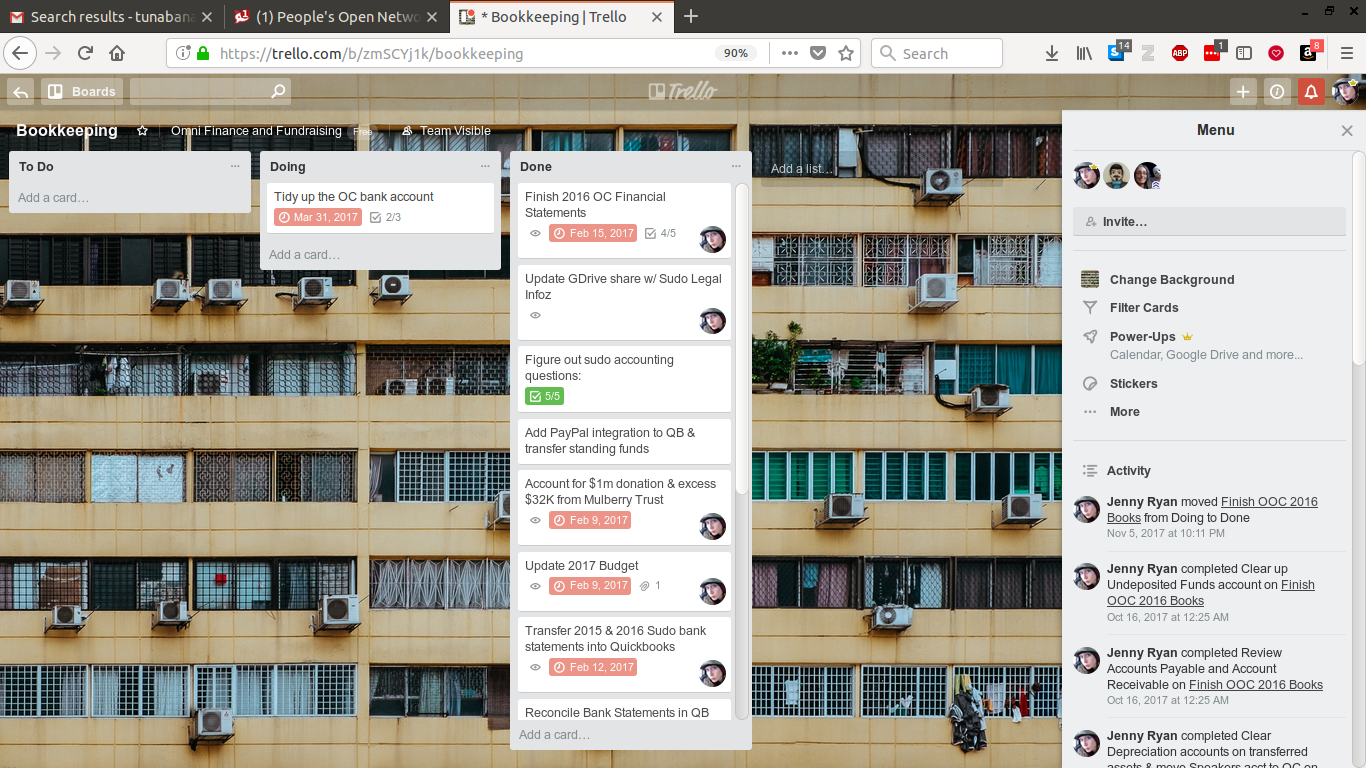
However, there are as many ways to organize this as you can imagine. It might be best to have a List or two consisting of static assets, as seen in the ‘Internal Logistics/Bureaucracy/Brainstorms’ Board below. This Board is something of a catch-all for important documents, overall project milestones, and random ideas for future features. In essence, it’s something of a merge of a strategic plan, a business plan, and organizational assets:

Another example of a combination of task management and shared documentation is the ‘People’s Open Events’ Board below:
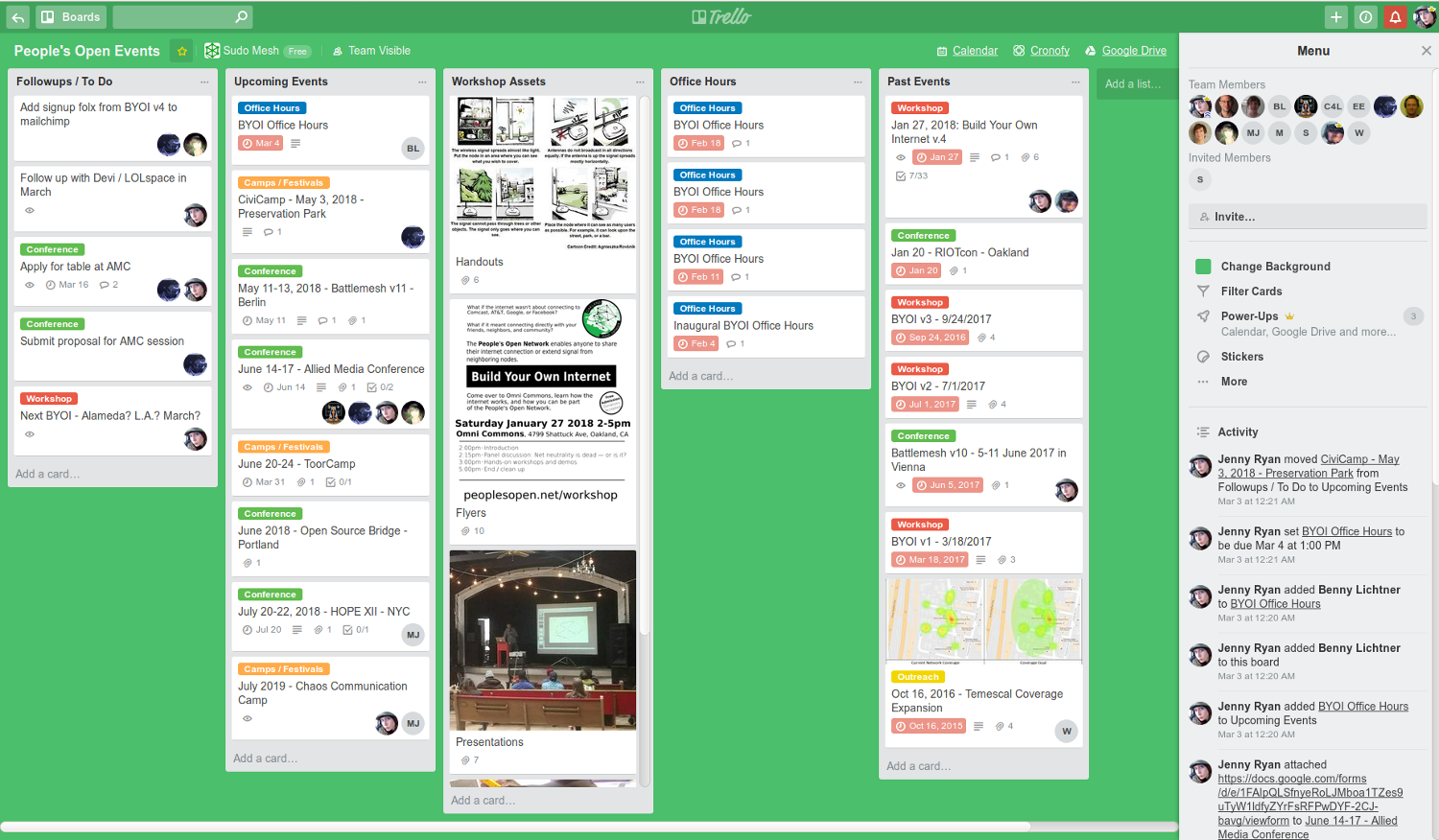
I tend to make the first List the main ‘To Do’ List. Members can join a Card indicating they’re taking on the task, and any Team Member can comment or add attachments (including links) to any Card. The ‘Workshop Assets’ List contains the Cards ‘Handouts’, ‘Flyers’, ‘Presentations’, and ‘Swag’. Each Card has several attachments to documents, images, video recordings and slideshows from past presentations – simultaneously a resource of materials we can reuse for the next workshop as well as inspiration for future workshops.
As we learn about conferences and other events we may want to participate in or present at, they can be added as cards to the ‘Upcoming Events’ List. Once an event has passed, Members can add video recordings, presentations, handouts and signup sheets to it’s Card, which gets moved to the ‘Past Events’ List. All events are dated using the ‘Due Date’ Card option, and a full calendar can be viewed by clicking the Calendar link in the top right – a Trello ‘Power-Up’ feature available to paying users or those given free Power-Ups after an invited member makes a new Trello account. Which brings us to…
Step 3: Create Card Flows and Integrations
This is the ‘secret sauce’ of Trello that I’ve yet to find as powerful an alternative to among the various open source options currently available. If you max out on Power-Ups, you can always use Zapier for further integrations (free accounts allow for up to 5 integrations). Between Trello’s Power-Ups and Integrations and Zapier, there’s seemingly no end to the number of possible integrations with other platforms and tools used for team collaboration and communication.
Using the Internal Logistics/Brainstorms/Bureaucracy Board above as an example, I set up the following integrations:
* The Calendar Power-Up, which attaches cards with due dates to a calendar view which is then synchronized with our team’s Google Calendar;
* The Google Drive Power-Up, which enables members to directly attach Google Drive files or folders to a Card;
* The Github Power-Up, which enables members to attach Github branches, commits, issues and pull requests to Cards.
Trello Integrations make it easy to create hubs for the many ways we communicate online – from Github to Mailchimp, press inquiries to community outreach, email to social media accounts. Here’s our Communications Board:
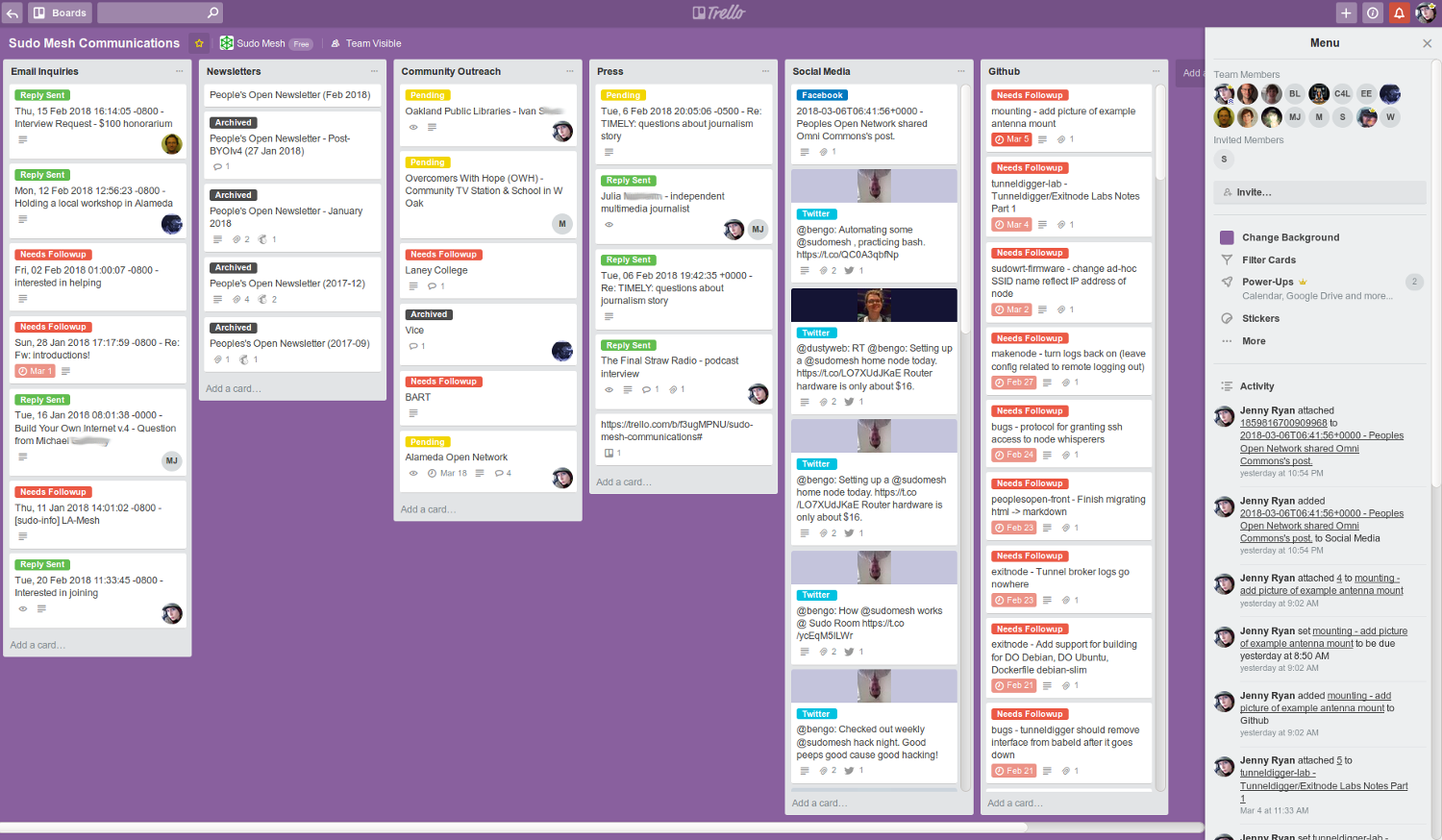
In this Board, I’ve created the following integrations:
* The Twitter-Trello Zapier integration (aka ‘zap’) automatically adds any public @ mention of our twitter accounts (@sudomesh) as a Card to the List ‘Social Media’;
* The Mailchimp Power-Up allows us to attach our Mailchimp newsletters to Cards, providing an overview of how many people were reached, who opened and how many clicked an internal link;
* The Github-Trello zap is used here to track issues and bugs submitted to our main code repositories;
* The Facebook-Trello zap adds posts and interactions with our Facebook page to the ‘Social Media’ List;
* The Gmail-Trello zap automatically adds any email I label ‘Mesh Inquiry’ to the ‘Email Inquiries’ list;
* The Calendar Power-Up gives our team a sense of how on top of our communications we are, and a historical timeline of public interest, press coverage, code development, and community outreach efforts.
Not on this Board but related: using a Google Form-to-Trello zap, any request to host a node sent though our Google Form is added to the Node Mounts Board under the List ‘Needs Followup’ as well as to a Google Spreadsheet tab. That spreadsheet has another tab for manually-input additions from team members, which are also added to the ‘Needs Followup’ Trello List using a Google Sheets-to-Trello zap.
Now, I’m not one to enthusiastically plug corporate, proprietary software tools – I just used what I knew was possible to create a high-level overview of the overwhelming array of code repos, shared etherpad-lite notepads, Google Docs, emails, events, requests, social media accounts, and other assorted sundry communication mediums, tasks and sub-projects that Sudo Mesh encompasses. Now I can see everything in one place, which is great, but how to get the rest of the team on-board?
Step 4: Integrate into Team Collaboration Practices
This can be done in a variety of ways, but one thing is certain: it’s always challenging to get people to use a new digital tool, especially when they’re not being paid to do so. Some strategies and tips I’ve picked up from the past failure of garnering participation in Omni’s Trello Boards and the current comparative success with Sudo Mesh:
Delegate roles and responsibilities.
In the beginning, this may entail the creator of the Trello Team assigning members to Cards. As members gain more familiarity with the platform, some will take to it and may well become stewards of a particular Board – encourage this! Decentralizing the role of ‘Project Manager’ leads to a sense of shared ownership, improves leadership skills and autonomy, and takes the burden off any individuals who may have had too much on their plate to do any one thing particularly well.
Use your system as a guide for structuring meetings and assigning action items.
We recently restructured Sudo Mesh’s weekly meeting format, and I took it as an opportunity to structure updates around our recently-created Trello boards. Here’s our current meeting format, where you can see our Trello Boards linked as a reference in the various project areas we check in on at each meeting. Action items that folks take on at meetings can then be added as Trello cards with assigned members – which anyone can add, thereby reducing the role of an individual top-down “manager” and augmenting that of “collaborator” in the mutual aid process of building the dream.
Set clear goals and develop group processes.
Recently, Sudo Mesh had a strategic planning session, where we discussed our short-term and long-term goals and organizational structures. These goals were then copied to the Trello boards, spread among the various categories of Boards and Lists. From there, we can drill down to the independent tasks needed to accomplish each goal, assigning them due dates and team members. I’m a big fan of abstracting each goal and then refining it in Checklists, of which you can add multiple to each card -you can even save a Checklist and reuse it in future Cards. I created an ‘Outreach Checklist’ in the Events Board so that we don’t forget to send our event flyer to specific local news outlets and mailing lists. Another team member created an ‘Outreach Checklist’ in the Node Mounts Board with a list of questions we should be asking every new node owner before we set off to climb their roof. There’s something inherently, deliciously satisfying in the act of making a checklist and then crossing off action items, refined over time until each recurring task becomes a well-developed, well-documented and efficient group process.
Design for big-picture clarity and historical reference.
As the archive of Trello cards grows, team members have a qualitative timeline and a collective journal of the tangible contributions, conversations, and achievements they’ve made together. It gives the project a sense of coherent narrative that surpasses
Of course, such a narrative is much more compelling, engaging, and authentic/validifiable when it’s: a) dynamic, adaptive and hackable; and b) transparently, openly, and publicly documented and accessible (enter FOSS)…
Step 5: Iterate!
As your project evolves, so will your project management structure. Don’t be afraid to archive old Boards or merge Boards, but I would advise against making too many Boards – recreating the problem of ‘too many things to keep track of’. Most importantly, be open to the very real possibility that this just isn’t the right modality for organizing this project. My experience arises out of an embeddedness in a culture that tends toward being digital tech-heavy, valuing productivity and literacy over communality and orality. Perhaps this is why such a structure, despite multiple attempts, could never thrive among the large and diverse community that makes up Omni Commons – moreso due to the fact that most everyone is there to contribute to their own collective projects. What works best to organize and motivate Omni volunteers are: work parties that happen in the spirit of participatory camaraderie; blackboards for denoting tasks and issues; and flyers for announcing events, campaigns and needs/offers.
But, I digress: back to iteration. Last month, a teammate deployed an instance of Rocket.Chat on our peoplesopen.net server. Up until then, communications had become increasingly varied and at times extraordinarily frustrating. We’d already had two mailing lists, an IRC channel, a wiki, a blog and a Github organization when we added the spokes that broke the mesh’s web: multiple Signal groups, their continual notifications haunting one’s periphery of attention at any given moment. On top of this newly-added, geographically distanciated layer, we were organizing quarterly workshops and again meeting at least twice a week – frequently more often to work on focused sub-projects alone or in small groups.
If we could just wean ourselves off of the other platforms*, Rocket.Chat satisfies many of our varying communication needs:
Provides ability for mobile, private and secure 1-on-1 or group messaging, a la Signal;
Preserves chatroom history, a la IRC – and integrates with existing IRC channels;
Enables file-sharing, search, archival, and contacts management, a la Gmail – and integrates with email;
Is entirely self-hosted, free and open source software.
Has hella *integrations!* with *Trello!* and IRC, email, Github… more of a Slack alternative. I’ve already set Github issues to announce to the #bugs channel and updates to the Communications Trello board to post to #comms…
* the website, wiki and code repositories would be merged with rocketchat in my utopian future
Last week, I finally sent in my thesis, which with appendices currently stands at 234 pages. I’ve been celebrating ever since, finally released from the constant strain I’d been under all year. The best comparison I’ve found for relating my experience is that of a marathon. I was a competitive distance runner in high school, and it would seem I transferred that competitive energy and masochistic endurance into my academic life. By “masochistic endurance,” I mean: the intentional sacrifice of the body’s needs for the sake of continually moving forward; when the brain separates from the body so as to control it, rather than being controlled by it-
ie- survival mode
Looking back, I see that the stress I put myself under, however much I rationalized the need for it, took a serious toll on my health, and ultimately affected every other realm of my life in the process. Take this blog, for example. I had all but abandoned it this past month, and for the most part it has been mostly a repository of snippets of my thesis and musings related to my research. In focusing my energies on the single-minded pursuit of one aspect of my life, I became unwell and overwhelmed.
The isolation I felt, despite the efforts of my friends and loved ones to support me, crept in during the loneliest hours- usually around dawn after spending a dozen hours at my desk. I recall searching the Web for stories of those in my position, looking for guidance and hope, or at least some solid advice on just when too much is too much. I couldn’t find a lot, but what I did find helped me immensely. Now that I’ve a clearer head, I thought I ought to do my part in returning the favor. What follows are some realizations I had to learn the hard way (damn), but maybe you won’t have to (sweet!):
One thing I realized is that staying awake for too long without pausing for rest is a huge time-waster. I would spend hours in a state of half-consciousness, struggling to put words to my increasingly scattered thoughts. Especially after 24 hours, my attention span and ability to articulate began to decline abruptly. Sleep is necessary. Your body cannot, in fact, be separated from your mind, no matter how much we wish it to be so.
I found it especially easy to rationalize such self-destructive behavior thanks to the discourse that surrounds university life. While my rational self knew I was in need of such human comforts as sleep and social activity, my competitive spirit clung to the vision fed to me through my environment and media consumption. That “vision” is in fact an irrational ideal of a superhuman superbrain. Now that I’ve stepped back from it a bit, it’s not nearly as alluring as it once was, this “success.” Success is happiness, and happiness comes about through wellness and ALLEVIATION, rather than perpetuation, of stress.
One thing that got me through during my frequent bouts of losing confidence was having mentors, in their various guises. Here I’ll take the opportunity to plug the potentially awesome benefits of this new “social web”- I was able to befriend and communicate with a variety of researchers and authors who might be considered experts, and their advice for me was enormously motivational. Inspiration and hope can be derived from even the briefest of exchanges at times. Reaching out is easier than ever.
Nevertheless, I cannot stress enough (heh) the incredible importance of grooming one another- face-to-face interaction cannot be replaced by any means. It is easy enough to become a hermit, but from my experience, we need others in order to keep it real. It is easy, also, through the process of isolation, to grow bitter of the world and to see yourself as separate and alone, a martyr. This past week has been one of reintegration; I now see that my biggest mistake this past year was neglecting so much of what makes me happy- people, especially- but I am lucky to realize now that the love had been waiting for me to return the entire time.
Writing that brought to mind the Desiderata, which I read every new year’s eve. That seems like a good note to end on- blunt simplicity.
Desiderata – Max Ehrmann
Go placidly amid the noise and the haste,
and remember what peace there may be in silence.
As far as possible, without surrender,
be on good terms with all persons.
Speak your truth quietly and clearly;
and listen to others,
even to the dull and the ignorant;
they too have their story.
Avoid loud and aggressive persons;
they are vexatious to the spirit.
If you compare yourself with others,
you may become vain or bitter,
for always there will be greater and lesser persons than yourself.
Enjoy your achievements as well as your plans.
Keep interested in your own career, however humble;
it is a real possession in the changing fortunes of time.
Exercise caution in your business affairs,
for the world is full of trickery.
But let this not blind you to what virtue there is;
many persons strive for high ideals,
and everywhere life is full of heroism.
Be yourself. Especially do not feign affection.
Neither be cynical about love,
for in the face of all aridity and disenchantment,
it is as perennial as the grass.
Take kindly the counsel of the years,
gracefully surrendering the things of youth.
Nurture strength of spirit to shield you in sudden misfortune.
But do not distress yourself with dark imaginings.
Many fears are born of fatigue and loneliness.
Beyond a wholesome discipline,
be gentle with yourself.
You are a child of the universe
no less than the trees and the stars;
you have a right to be here.
And whether or not it is clear to you,
no doubt the universe is unfolding as it should.
Therefore be at peace with God,
whatever you conceive Him to be.
And whatever your labors and aspirations,
in the noisy confusion of life,
keep peace in your soul.
With all its sham, drudgery, and broken dreams,
it is still a beautiful world.
Be cheerful. Strive to be happy.
I knew the day would come: I’ve received my first real robot-spam on Facebook just a few minutes ago. Funnily enough, I was just this evening writing about Facebook’s slippery history with fucking over it’s core users- ever since the News Feed was introduced in the fall of 2006, followed by the site opening its doors to everyone, including third-party developers and advertisers, and of course we can’t forget Project Beacon- in my thesis.
The Spam:

Orality and visuality converge and merge into the online medium, reaching simultaneously for both the hearth and the cosmos. This hearth is the realm of the domestic, where we feed our desire for the security of our intimate relationships and the capacity to be our “true self.” At the same time, there is the desire for belonging to the cosmos, the sprawling landscape wherein we accumulate status and perform our identities, which are the products of the various cultural and institutional systems within which we are embedded.
What makes the online medium unique, then, is its capacity to bridge the gap between the realm of the hearth and the realm of the cosmos, reversing what has been called “the disintegation of the public sphere.” However, the transparency and permeability of the online medium renders the private sphere susceptible to public visibility. With the popularization of online communication came an inevitable “moral panic,” inciting both a discourse of fear regarding the transgressive nature of virtual intimacy as well as corporate interest in exploiting the Web for its economic potential. Nevertheless, for the most part the intangible dangers of being held accountable to largely invisible audiences are considered secondary to the convenience of instantaneous access to this public “global village” from the comfort of the home
This post inspired by Paul Levinson’s Digital McLuhan and Cosmos and Hearth (Tuam).
Over the past two years of conducting online ethnography, I’ve collected quite the bevy of resources I’ve come to think of as the cyberanthropologist’s toolkit. Adjust your bookmarks accordingly:
Alexa Web Information Inc; is the definitive source for website traffic data. Besides providing more general statistics such as world traffic ranking and total hit count, the site also breaks down the percentage of visitors by country, changes in ranking over the past three months, and average number of page views per visitor. Great tidbit for a footnote when introducing a website in your research.
The Pew Internet & American Life Project has been conducting surveys and analyzing online trends since 2000. Their extensive reports are archived on the site, and encompass the following categories: online activities & pursuits; demographics; Internet evolution; technology & media use; health; family, friends, & community; major news events; public policy; e-gov & e-policy; education; and work. I would recommend this site for anyone interested in changing attitudes over time, or merely as a source of inspiration for those searching for a controversial issue to explore.
Providing an historical overview is critical to any in-depth research. Nicole Ellison and danah boyd have put together a fantastic history of social network sites, which details the evolution of Friendster, MySpace, and Facebook, among others. Additionally, Facebook provides an official, month-to-month timeline of important events in the site’s history. Though I can’t vouch for its credibility, I was able to locate a blog post that details the evolution of MySpace.
Finally, my blog WebnographY contains a plethora of literature reviews on the topic of online ethnography, as well as links to my past research projects and assorted random musings. Find links to a variety of pertinent articles on my Resources page. Cheers!
A recent post on ReadWriteWeb discusses the general decline of the popularity of print media and the shift toward reading activity conducted primarily online. We are in the midst of transitioning to yet another form of media, and, like television before it, many of the concerns about this shift pertain to whether this medium is good or bad for “society.” I would argue that the imposition of a value structure in understanding the changes this shift has been accompanied by is insufficient.
While newspapers played a significant role in the formation of national consciousness (through an awareness of an increasingly shared readership), television and the music industry brought people together on the basis of shared cultural tastes that helped individuals to define themselves through identifying with specific niche interests. The Internet has helped to extend this process of individualization, and in the process has transformed the degree of agency people have in learning about the wider world, and most importantly, granting them a voice with which they might be part of that world.
The information we “digital natives” now come across on the Internet is increasingly social in nature. As opposed to the more “top-down” distribution of news and entertainment, the social web creates a heightened sense of shared readership by creating a more horizontal structure (think Digg, social networks, the blogosphere, etc . As a result, we are given more agency in assessing the quality of information – leading to a new form of reading that involves scanning, filtering, aggregating and organizing. I would argue that this is not a “dumbing down” at all, but rather a qualitative shift in the way we learn through media. The question then becomes, who is in fact “dumber”- the person who reads the newspaper that lands on her doorstep and accepts it as the truth, or the person who reads bits and pieces from many news sources (including blogs) and is able to piece together a more complex perspective? . As a result, we are given more agency in assessing the quality of information – leading to a new form of reading that involves scanning, filtering, aggregating and organizing. I would argue that this is not a “dumbing down” at all, but rather a qualitative shift in the way we learn through media. The question then becomes, who is in fact “dumber”- the person who reads the newspaper that lands on her doorstep and accepts it as the truth, or the person who reads bits and pieces from many news sources (including blogs) and is able to piece together a more complex perspective?
I think a more pertinent question to ask is the degree to which the Internet is affecting individual or collective identity- the concept of “networked individualism,” introduced by Boase and Wellman, suggests we are expanding our social networks (weak ties in particular) according to our individual interests and communities of membership, thus diversifying the kinds of information available to us. Simultaneously, through the Internet we are potentially approaching the fulfillment of McLuhan’s notion of “the global village,” and in the process forming a new sort of collective identity- the feeling that we are not only a part of, but increasingly connected to the world on a global scale.
To date, little to no research has been published on the growing trend of arranging marriages using online matrimonial services. However, I was able to find a small body of contemporary literature concerning online romance more generally. Online courtship, like traditional arranged marriage, is a process by which two people come to know one another before their romantic love develops, if it does indeed develop. Online matchmaking services and social networking sites (such as MySpace) enable individuals to learn about potential mates before even initiating conversation, let alone meeting them face-to-face. A common criticism of Western courtship practices is that such relationships often become sexual before two people really get to know one another, and thus the passion of initial lust is frequently mistaken for love. In framing these criticisms, the high divorce rate in the US is often cited as evidence that “love marriages” are not all they’re cracked up to be:
“Arranged marriages have worked well in the past. But like I said earlier, love doesn’t necessarily last. In America the divorce rate is over 50%. I think the whole myth of instability in arranged marriages is blown out of proportion. More often than not, it’s the love marriages that end up in ruin.” (Indian High School student on Facebook India network forum, Nov. 2007)
It is important to assess the social consequences of new technologies, particularly those that may at once challenge and reinforce traditional practices and beliefs in conflicting ways. My preliminary findings reveal that online matrimonial sites empower young Indians and Indian Americans by: expanding the field of potential marriage partners; granting them a greater degree of autonomy in choosing them; and facilitating the search process, thus making it easier to find others compatible with one’s upbringing, lifestyle, personal goals, and beliefs. At the same time, many seem to view their membership on the site as either a current duty or a future inevitability, yet another obligation fulfilled in order to appease the demanding high expectations of Indian parents. The frustrations experienced by young Indian Americans in relation to the expectations of their parents is exemplified by the popular Facebook group “I can’t live my life the way I want too because I got DESI PARENTS!” which has 3,802 members. The mass appeal of Shaadi.com may, I suggest, lie in its successful fulfillment of both the young modern Indian’s drive for independence and autonomy, as well as the older generation’s inherited traditions of ensuring compatibility between their children in accordance with specific markers of identity.
Indian Americans, in particular, struggle to formulate self- and collective identities that fulfill the often contradictory demands of traditional Indian values and modern American ambitions. The result is a variety of hybridized identities collectively known as “desi.” The identity crisis faced by the children of India-born “desis” living in the Western world has given rise to the term “ABCD,” or “American-Born Confused Desi.” The situation of Indians in the 21st century is one marked by extensive transmigration, evolving communications technologies and subsequent increased career possibilities for both men and women, and the influx of Westernized ideals of self-determination and independence. There are complex forces at work here, and any sensitive exploration of these issues would do well to avoid framing them as merely binary oppositions (ie; traditionalism vs. modernism, Indian vs. Indian American). Rather, I intend to conduct original research, exploring the complex experiences of individuals encountered “in the field” through discursive analysis and participant-observation. These include native Indians as well as American-born Indians, and the various unique ways in which these individuals incorporate different Western and Indian values in the construction of their worldviews, sense of belonging in their communities, and production of self-identities in talking about marriage and engaging with Shaadi.com. In particular, understanding and articulating the plight of Indian and Indian American women, who must balance traditional norms of self-sacrifice to the family with their own desire for independence, may shed light on similar struggles faced by women around the world.
Can you tell I’m pretty deeply immersed in the world of academic research these days? Sharing is caring, and I’d like it to be known that I support collaboration over competition when it comes to the production of knowledge. As such, I encourage you to forward this post to anyone you know who could use it (especially thesis writers).
1. EndNote Web – You may have heard of EndNote- a comprehensive program for organizing citations and creating bibliographies that is used extensively by thesis writers- but you probably didn’t know that you don’t need to download or buy the expensive program (sold online for $250), which has numerous compatibility issues, anyway. EndNote Web is, first of all, FREE, and secondly, maintains your personal database of citations online. So if you, like me, are poor and unable to obtain a compatible version of the program through the school’s software database, this online program is a godsend. Furthermore, with EndNote Web you can also search online journal and library databases within the site. Sweet.
2. bubbl.us – When crafting a paper, it can really help to visually outline it before you write. The best tool I’ve come across is bubbl.us, which allows you to fill in little bubbles and link them to one another either horizontally or vertically (see screenshot, below). In addition, you can share your bubble diagrams with others, and even let them collaborate in the outline’s construction. I always use this site to outline my thesis chapters, which I’ve shared with my advisor in the past.

3. Diigo – A really fantastic social bookmarking and annotation tool. Like del.icio.us, Diigo arms you with web browser toolbar that lets you publicly share and organize your website bookmarks. However, Diigo expands upon this premise by allowing users to highlight, clip, and make sticky-notes on the websites you bookmark- and this makes it a powerful research tool (especially if you’re me- prone to bookmarking websites that mention anything having to do with my thesis, and forgetting why they were important later).
4. The OWL at Purdue – This website is a must for anyone confused about the variety of citation styles and the rules for composing bibliographies. It extensively outlines MLA, APA, ASA, and Chicago styles, and in addition discusses various research issues. Most useful, in my opinion, is this page, which contains links to online guides for documenting electronic sources in various disciplines.
5. SurveyMonkey – This is the best free survey-generator I’ve come across, and I used it last year when conducting a survey on online social networking practices. The free version of the software lets you compose 10 questions, which can be multiple-choice, a rating scale, a matrix selection, or open-ended. You can also make it kinda pretty. After you make it, SurveyMonkey will help you collect responses by creating e-mail invitations, website popups, or simply a copy-and-paste link. You can also view responses, which are neatly organized for easy analysis.
Truth? I don’t consider myself a “techie,” because I actually mistrust technology a whole lot. Case in point: I received a hip (expensive) GPS locator (a TomTom to be exact) for Christmas. As I’m the type of spacey kid who gets lost at the drop of a hat but is constantly traveling about the East coast, it was a brilliant and wonderfully kind move on my parents’ part. I love how the female British voice I chose tells me to go “straight on!” after the Williamsburg bridge, but to be honest, I think the TomTom causes more havoc than it prevents.

Without warning, and quite frequently, it will simply lose the GPS signal. Now, when you’re making a dozen tiny turns in the span of two minutes, to suddenly not be given directions is dangerous, indeed. One can easily become dependent on the damn thing, but a word to the wise: copy down directions before you leave. Furthermore, keep a map in the car – or better yet, a road atlas for the entire country. While I’m excited to one day really test drive my TomTom by driving across the country, it definitely is not reliable enough to be my primary means of navigation.
However, on the plus side: one can do quick searches of the local area (for example, “Camping Grounds” or “Pizza” , use the TomTom to calculate navigation time down to the minute, and (if I had Bluetooth) check for possible traffic delays. It’s a great contraption, when it’s got a signal… , use the TomTom to calculate navigation time down to the minute, and (if I had Bluetooth) check for possible traffic delays. It’s a great contraption, when it’s got a signal…
On the topic of technology that simply fails, both Camino and Google Notifier (which used to give me satisfying *ding*s whenever I got a new e-mail) are acting completely screwy. Notifier has simply stopped being able to access my inbox and tell me what mail I have (even after a reinstall). Camino likewise has just started sucking- after a few minutes of normal functioning, it will simply stop being able to load any websites. Safari, on the other hand, works fine…
Don’t you hate it when you get attached to some technology that just inexplicably stops working? Someday I’ll give it all up, move back to the land, get me a chicken and grow vegetables…
The introduction of the Internet in my life occurred at the pivotal juncture between childhood and adolescence. Moreover, for me this transition was made even more definitive by my family’s move from the countryside of upstate New York (where our backyard merged with a local farmer’s berry crops) to the nearby small college town of Clinton. The move was made in large part so that I could legally attend one of the better public schools in the area, having graduated from a tiny private Catholic elementary school in the same town. Not only was I the new kid, but I was a shy bookworm who still let her mother choose the clothes she owned. Overwhelmed, I found solace and freedom on the Internet, where it didn’t matter whom you knew or what you wore. Certainly, my online interactions were not always pleasant, but I at least had time to craft a witty response, unhindered by my tendency to blush furiously and lose the ability to speak in response to direct confrontations.
Like all adolescents, I sought an environment in which I could experiment and play. Many of these explorations were marked by transgressions of the “social laws” that typically guide young adolescent behavior, such as adult supervision, as well as more general social norms of aggression and sexual conduct. My first forays into the veritable human jungle of online chat rooms were my own secret dramas, the social risks of which were null (in the “real world,” anyway). Early on, I learned to avoid the America Online chatrooms, preferring the more anonymous, explorative diversity of Internet Relay Chat (IRC) . On AOL, I was frustratingly limited to a single username linked to my main e-mail inbox, meaning that anyone I conversed with in AOL channels could send me messages whenever I was online (unless, of course, I blocked them). With IRC, I was free to create a new name for myself each time I logged in, free to experiment without risk of exposing my true identity. Often, I attempted to pass for a college-aged woman with a name like “Wildfire,” and was delighted to find I could successfully banter intellectually with my faceless peers. Many of the more popular chatrooms felt a bit like entering a bar: one would immediately be asked “a/s/l? (age/sex/location?)”. To expose oneself as a young female would be a fatal flaw, indeed; it would inevitably result in a barrage of messages, the likes of which taught me a good deal about men, sex, and danger. Oftentimes, when I didn’t feel like dealing with the lecherous come-ons of lonely men, I would choose an androgynous handle. Over time, I developed the ability to discern between the aforementioned squalor and “quality” chatrooms, and came to spend a good deal of time competing with other users in word games monitored by a robot, or gossiping in fan-based chatrooms about the last episode of The X-Files.
“Jenneh,” as I was known to those I considered my closer (albeit still faceless) Internet friends, was the creator of a website composed mostly of favorite quotes, self-fashioned graphics and animations, and long lists of “favorites.” Anyone who was at all Internet-savvy during this time period (often younger users) had a personal webpage, usually obtained by creating an account with a free web-hosting provider such as AngelFire or Geocities. Usually, these pages were loaded with bad HTML, such as flashing text and continuous GIF animations. Creators of such sites linked to one another based on the relevancy of another site’s content (a direct recommendation), or through interest-based “webrings” located on the page (typically not affiliated with the site owner herself) . Such custom-made, egocentric webpages parallel today’s online social networking profiles, where everyone is an author without an editor. Today, such webpages/profiles are usually linked together through social networks increasingly based on offline ties. Certainly, the medium for self-expression on the Internet has evolved, but the desire for transgression, the search for connection, and the allure of anonymity and fantasy continue to be key factors in why people choose to engage with one another online in the way that they do.
My first sexual “encounter” occurred in the ethereal realm of cyberspace at the age of 13, where I also fell in love with a boy I would never end up meeting face-to-face. Though it would be another two years until my first offline sexual interaction, the sense of intimacy, excitement, awkwardness and joy felt no different. We’d gotten to know one another in the chatroom of a downloadable game called HoverCraft, where players met in the game’s chat rooms to challenge each other to virtual races in virtual hovercrafts. In this world, I was a renowned “expert” at the game, and so was he. After races, which we usually won, we would often linger on the course, represented by our little red hovercrafts, typing to each other into a void made somehow more visceral by our frequent games of hide-and-shoot. Though we chatted for hours each night for several months, when he finally called me on the phone our conversation was stilted. His voice sounded too feminine, too young. I realized that my attraction to him had hinged in large part on fantasy, fueled by the titillating unknown. Nevertheless, our bond was not entirely imagined; it was, most certainly, the result of what I have come to call “mind-melding,” when empathy, vulnerability, and love coalesce to allow for the kind of connection that transcends the petty hierarchies of appearance, social status, and even spatial proximity itself. That year, following a recent divorce from her cheating husband, my best friend’s mother moved to Germany to marry and live with a man she’d met over the Internet and gotten to know over a period of 10 months. As parents raised eyebrows and murmured their disdain for such “impractical,” “pathetic” behavior, I remember thinking to myself, “the world is certainly evolving faster than they can understand.” My friend’s mother remains happily married in Germany to this day.
|
|




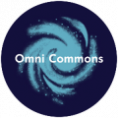

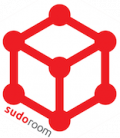

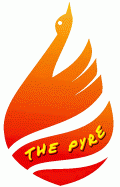

 . As a result, we are given more agency in assessing the quality of information – leading to a new form of reading that involves scanning, filtering, aggregating and organizing. I would argue that this is not a “dumbing down” at all, but rather a qualitative shift in the way we learn through media. The question then becomes, who is in fact “dumber”- the person who reads the newspaper that lands on her doorstep and accepts it as the truth, or the person who reads bits and pieces from many news sources (including blogs) and is able to piece together a more complex perspective?
. As a result, we are given more agency in assessing the quality of information – leading to a new form of reading that involves scanning, filtering, aggregating and organizing. I would argue that this is not a “dumbing down” at all, but rather a qualitative shift in the way we learn through media. The question then becomes, who is in fact “dumber”- the person who reads the newspaper that lands on her doorstep and accepts it as the truth, or the person who reads bits and pieces from many news sources (including blogs) and is able to piece together a more complex perspective?
